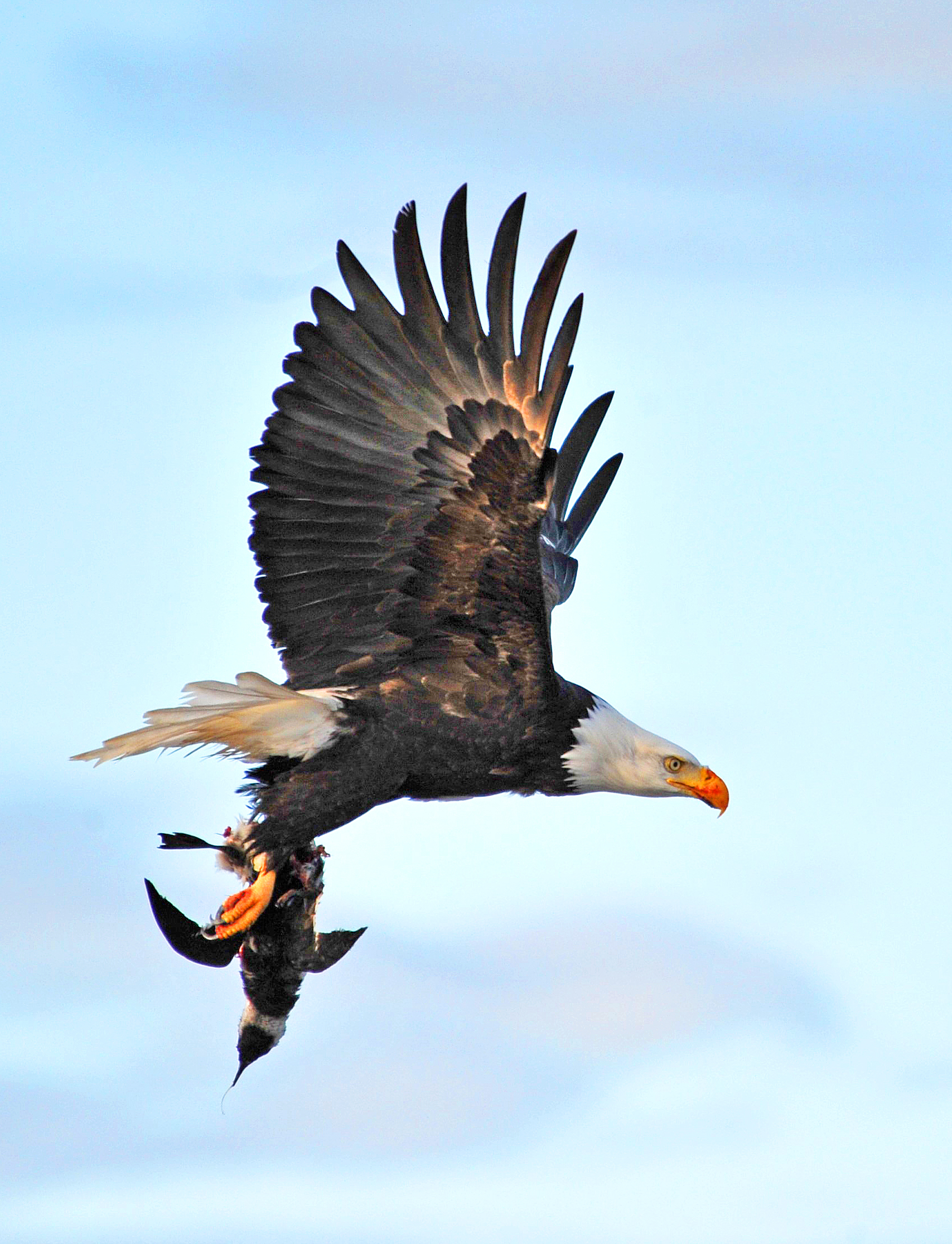Could the successful recovery of one species be causing the decline of others? SeaDoc takes an eagle-eye view of troubled bird populations.
By Bob Friel
Predator-prey relationships are strong evolutionary drivers and prime movers and shapers of our natural world. They also make for dramatic stories that seem to portray black-and-white cases of cause and effect.
Ecosystems, however, function at such a high level of complexity that seldom are things as straightforward as they appear.
In Yellowstone, introduced wolves take down elk and the park’s forests grow and streams revert to meandering courses. In the Salish Sea, seals and sea lions are protected and salmon populations crash. Along the Pacific flyway, we stop poisoning and shooting bald eagles and suddenly seabirds are struggling.
These all look like clear examples of cause and effect, and it’s tempting to consider wildlife management decisions based on simplified storylines. For example, if we want to increase numbers of one animal we just need to reduce the number of its predators, right?
When dealing with intricate ecosystems, rarely is it as simple as 1 + 1 = 2. It’s more like: 1 + a(x)/b cos nx/L + b sin nx/L = an educated hypothesis.
Continuing research shows that Yellowstone’s recovery of willows, aspens and streams isn’t because wolves are eating a certain number of elk—it’s a more complicated dance of temporal and spatial population dynamics. And West Coast salmon have many other problems affecting their survival than just the increase in hungry pinnipeds. Removing seals from the equation won’t fix the issues with habitat, harvest, hatcheries and dams.
When it comes to waterbirds and seabirds, SeaDoc has been at the forefront in documenting the serious declines in the Salish Sea’s overwintering bird populations. We previously studied bottom-up causes of seabird declines such as the reduced availability of prey fish. More recently, we examined top-down pressures on bird populations by funding researchers Holly Middleton, Rob Butler and Pete Davidson who literally took an eagle-eye view of the problem.
During the winter, southern B.C. hosts hundreds of thousands of wigeons, pintails, teals, mergansers, buffleheads, scoters, grebes, loons, gulls and others. This winged roundup attracts more eagles than the 2018 Super Bowl.
Bald Eagle recovery from near extinction is a conservation success story. But a predator’s return can mean increased impact on its prey. In the Salish Sea, eagles are primarily fish eaters, feasting on salmon during the fall and early winter spawning runs, and then switching to eating more marine birds later in the season when the runs are over.
To see what effect the world’s largest concentration of white-topped raptors has on dabbling ducks and diving birds, the scientists surveyed Boundary Bay, which straddles the Washington State-British Columbia border. The team ran transects by boat to study population dynamics, and also used aids to navigation as aids for their research by collecting leftover bones and body parts from channel markers that eagles use as hunting perches in the shallow bay.
In her study, Middleton found that eagles not only preyed on waterbirds, but that their mere presence affected where the birds fed and how they rested. With our deeply troubled salmon runs possibly forcing eagles to depend more heavily on birds and preying on them for more months of the year, the thousands of bald eagles that flock to the Strait of Georgia each winter may indeed be a factor hindering the recovery of loons, grebes and other birds.
Does this mean we should start shooting eagles to save seabirds? Of course not. Population control of top predators has never achieved the goals of recovering prey species. And across the globe there are many examples where removing or reducing predators has caused trophic cascades that affect not only natural processes but also negatively impact humans directly, through disease transmission, increases in wildfires, agriculture losses and other problems.
Instead, by working to achieve greater scientific understanding of these complex predator-prey interactions we’re better able to improve the entire ecosystem and recover all species, including the predators and their prey.
Private donors like you made this study possible. Thank you for investing in SeaDoc, science, and thoughtful ecosystem recovery.

